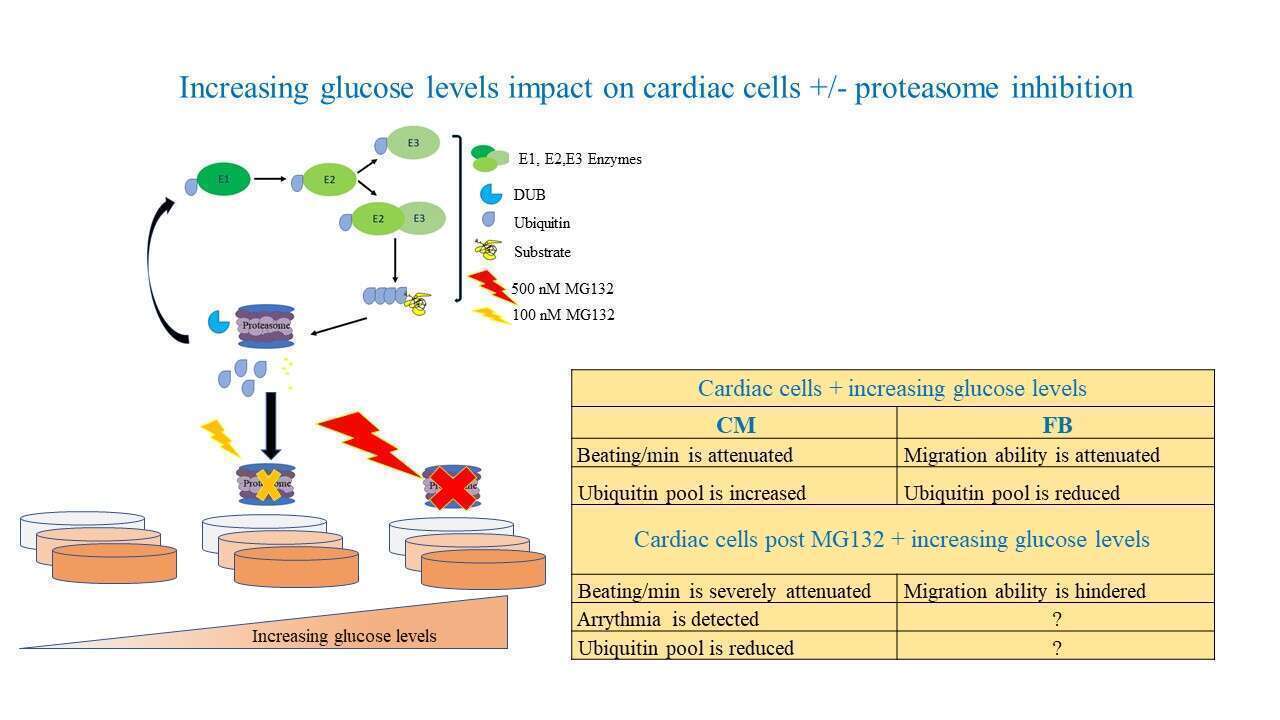
Cardiac cells prone to existing proteasomal damage exhibit impaired functionality and total ubiquitin-pool reduction in response to increased glucose levels
2Sackler Faculty of Medicine, Tel Aviv University, Israel
3Unit of biochemistry, Faculty of Medicine, Technion-Israel Institute of Technology, Israel
4The Division of Endocrinology, Schneider Medical Center, Israel
Introduction: Many cellular processes in the body are regulated by the ubiquitin-mediated proteolysis; consequently alterations to the ubiquitin proteasome system`s (UPS) function are associated with the etiologies of various diseases, including heart pathologies. Diabetic cardiomyopathy (DCM) is characterized by structural and functional changes, and has been shown to increase the risk of developing heart failure. While the mechanism underlying DCM has not yet been clarified, we hypothesize that diabetes-induced heart failure may be linked to preliminary UPS malfunction. The goal of this study was to investigate the impact of increasing glucose levels pre- and post a proteasomal dysfunction on neonatal rat ventricular myocytes (NRVM/ CM) and cardiac fibroblasts (FB).
Methods: CM and FB were subjected to either mild [100 nM] or strong [500 nM] inhibition by a proteasome inhibitor (MG132), then treated with increasing glucose levels. Cardio-biomarkers (ANP and BNP) were evaluated using qRT-PCR. Cell functionality was assessed by the number of beat/min (CM) or migration assays (FB). Lastly, the prevalence of total ubiquitin pool (free ubiquitin and ubiquitin-conjugated) was detected using WB and immunofluorescence staining.
Results: CM exposed to proteasome inhibition exhibited sensitivity to increasing glucose, demonstrated by secretion of BNP. CM beats/min decreased in response to increased glucose, and the magnitude of this decrease was amplified by mild inhibition. FB migration ability was hindered under increasing glucose and post inhibition. FB`s total ubiquitin pool exhibited a trend of reduction in response to increasing glucose; however, CM total ubiquitin pool was significantly increased, though this phenomenon ceased post strong inhibition.
Conclusions: Increasing glucose levels differently impact on cardiac cells subjected to a proteasomal dysfunction further highlighting the complex UPS mechanism present in the diabetic heart. Nevertheless, further investigation is necessary to fully determine what constitutes the baseline value for cardio-balanced UPS homeostasis, while considering cellular interactions.

Powered by Eventact EMS